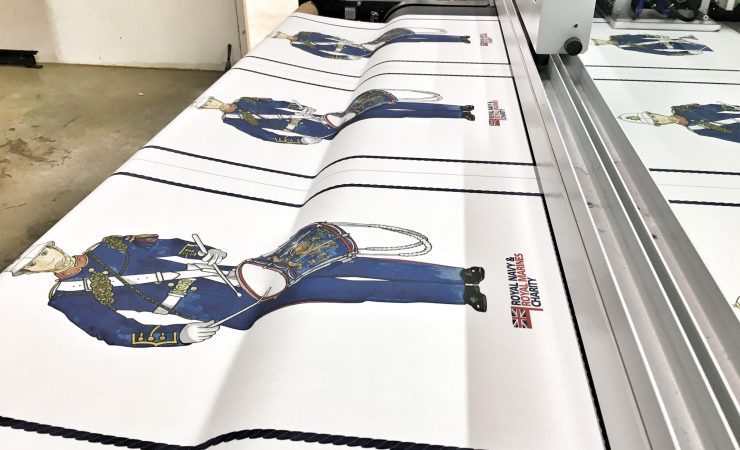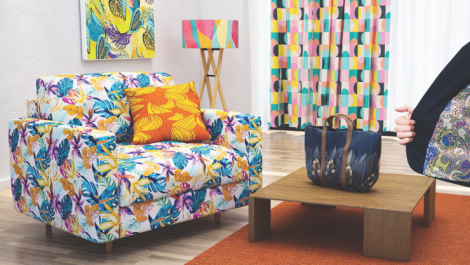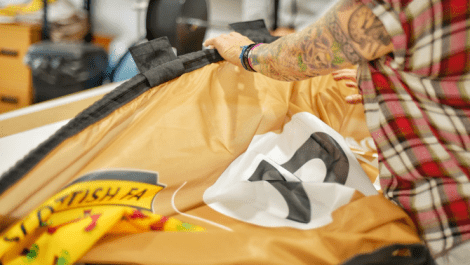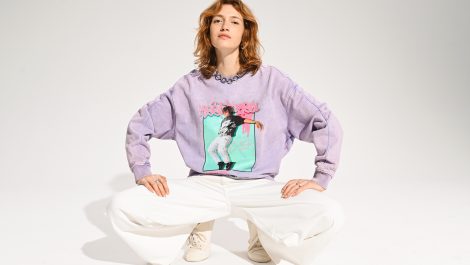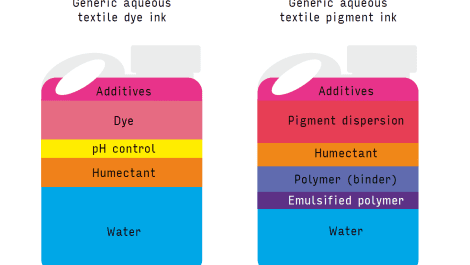Based in Staffordshire, England, The Magic Textiles is a shining example of the sort of success a company can achieve when it dedicates itself to digital textile printing. In this article, the company’s Ellie Casswell give Digital Textile Printer an exclusive peek behind the scenes in Leek.
According to Ms Casswell, The Magic Textiles started out printing textiles almost 20 years ago, before starting to transition to digital methods around a decade ago. ‘Over the last 10 years we’ve delved deeper and deeper in digital,’ she told Digital Textile Printer. ‘Before that we, and most of the rest of the industry, relied on mainly on rotary screen printing. However things have shifted from screen to digital over the last few years and we’ve just followed the trends.
‘We’ve added more and more digital machines as the years have gone by, and transitioned more and more of our work and operations to digital as a result. We started out with a pair of MS machines initially, they were the best fit for us as the software, print files, colour matching and the like all went hand in hand, it was the best option.’
The Magic Textiles now boasts an arsenal of five digital printers, the two aforementioned MS machines, one Mimaki pigment printing machine, and two different Homer digital printers. Though the company is now predominately digital it does still operate a rotary screen printing machine as well.
The firm offers a wide range of digitally printed applications, including custom-made tea towels, flags, bespoke seat covers, suit linings and more. ‘We offer bespoke printing for any end use,’ Ms Casswell says. ‘Whether it’s digitally printed fabric for use on apparel and home furnishing items, or promotional tea towels. We unite your creativity and our expertise to produce amazing results.
‘We’re well-known for being flexible, pro-active and approachable – that’s why our clients like us so much – to give you not only a high quality product, but a high quality service. We’ll make the process as smooth as possible, with our experience, knowledge and resources constantly at your disposal. If you’re an independent designer, a small manufacturer or just want to add a personal touch to your textiles, just bring us your ideas, concepts and designs and we’ll make it happen. We understand your world, and why quality, reliability, and professionalism are so important.’
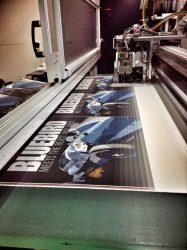
The Magic Textiles first broke into digital printing mourned 10 years ago
Digital suitability
When it comes to when digital would be the most appropriate technology to use, Ms Casswell explains, ‘For the market which we are in, which is home textiles, digital printing is ideal as customers do not have to commit to high meterage for orders, they can achieve a finer attention to detail and, as we use reactive inks for digital printing, they can achieve a wide range of colours. Investing in screens can be costly for rotary screen printing, and you are limited as to what you can include in your design in terms of the complexity of the design and the amount of colours included. Between our digital printers, there are som machines that are more suitable for certain jobs than others. For example, we offer pigment printing on the Mimaki machine and reactive printing on our MS and Homer machines. When customers require a print which is going to go in direct sunlight, we offer pigment prints as the inks are light fast, if a customer is requiring a print that needs to be colourful and have a superior rub, we suggest reactive printing due to its superior colour fastness.’
New machines
Naturally for a company that has transitioned to digital, over a period of several years, by installing new machinery, The Magic Textiles has plans to keep investing. ‘We hope to have a new digital printing machines in the next few years,’ said Ms Casswell. ‘This will allow us to have the capabilities to print more fabric and supply more customers with more goods at our busiest times of the year, such as Christmas. At the moment we are going through the process of seeing what options are out there and what would be most suitable for our needs.’
This extra capacity might yet prove invaluable, as the company does have plans for the years ahead. ‘We’re planning to keep following industry trends,’ expands Ms Caswell. ‘Mainly seasonal trends. As such we have recently developed beach bags and reversible tote bags and, within this, we have spent time developing different artwork templates.
‘We’re also exploring colour matching as a way to keep meeting customer requirements. Our existing printers and steam and wash range means customers can develop files, print them and be able to review them the next day as they are throughout the process.
‘I don’t see us ever stopping exploring new machines and processes. I feel this is what really sets us apart, the fact that we really make a conscious effort to have up to date machinery, different types of machinery in order to keep our customers interested in what we do here. I have recently set on new staff who work in the artwork and print department who have a wider knowledge of software and colour matching. I think if we could continue to improve our skills in this department, there may be different and more complex which we could investigate and broaden what we offer to customers.’
Industry issues
One of the most common issues discussed in both commercial print and within textile printing, is the sectors relative failure to reach out to younger generations and explain the benefits of the technology and the advantages of a career within the industry. Digital Textile Printer asked Ms Casswell whether she felt that digital print (as an industry) was doing enough to reach out to designers and consumers in order to explain what the technology is capable of when it comes to textiles.
‘We have recently done a couple of orders for university students and young designers,’ she said. ‘I thinking, because we have low minimum order quantities, it allows students to sample printed fabrics with their designs on them to use in coursework or other projects. I think that doing this opens the doors for them to the wider textile printing world. Honestly, I’m not sure whether students get any funding to do this sort of thing, but if they don’t, I suggest that they should as it would be a great way to introduce the next generation to digital printing without that cost implication being there.’
Another trend we discuss frequently, and one which gives us another glimpse into the future for The Magic Textiles is that of print service providers embracing e-commerce and web to print platforms in order to better serve their customers. Is this of interest to Ms Casswell? ‘We have recently just launched a new website,’ she concluded, ‘which allows out customers to order online. By extension, this means that our staff are freed up to spend more time on things like product development. Overall I’d say the main benefit of the website is the way it allows us to reach out more to customers existing and prospective.’
It is often said that the companies that thrive are the biggest, or the richest, but those that are best able to adapt to change. The Magic Textiles has already proved its ability to do this, and there’s no reason to think that it won’t continue to do so. Certainly it will be interesting to see what the company does in the years to come.

